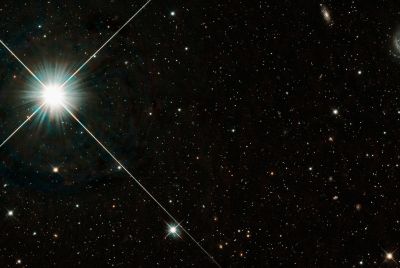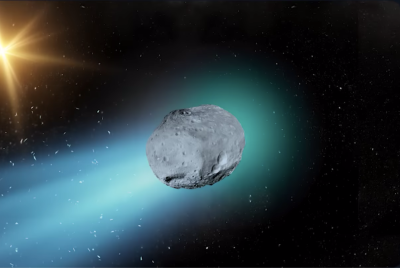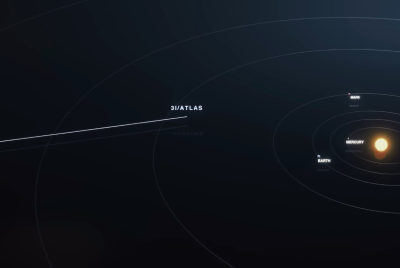3I/ATLAS: Harvard Expert Avi Loeb Reveals 'Alien Ship' Has Seven Thrusters Near Sun
Harvard's Avi Loeb says 3I/ATLAS shows seven thrusters near the Sun, hinting at alien tech.

An extraordinary claim has surfaced: Harvard professor Avi Loeb suggests that the interstellar visitor 3I/ATLAS could be an 'alien ship' employing seven visible thrusters as it nears the Sun.
Mysterious Thrusters and the Glowing Halo
According to the report from the Daily Star, the object appears to release 'seven distinct jets' with a 'large glowing halo' as it nears the sun.
The article describes the object based on stacked images showing 'large glowing halo extending out to half a million kilometres' with at least '7 distinct jets.'
Also, it mentioned that according to Harvard astrophysicist Avi Loeb, some of these are anti-tails in the sunward direction.
Loeb's Hypothesis: Technology, Not Rock
In a published article, Professor Loeb, a noted figure in the search for extraterrestrial technosignatures at Harvard University, has described 3I/ATLAS as a 'gift from interstellar space' and highlighted what he sees as ten anomalies that separate this visitor from familiar comets.
Among his concerns are the object's trajectory, which closely aligns with the ecliptic plane, the mass being unusually large compared to known interstellar objects, and significant non-gravitational acceleration having reportedly been observed.
Loeb specifically writes: 'The 10 anomalies motivated me to propose the possibility that 3I/ATLAS is an extraterrestrial technological product of another civilisation in the Milky Way galaxy.'
The Human Impact: Why This Matters
If 3I/ATLAS were confirmed to be artificial, the implications for humanity would be immense. A craft with visible thrusters or jets approaching the Sun could indicate reconnaissance, exploration, or even a deliberate mission. An NDTV World article hinted that Loeb has warned that, whether benign or hostile, our society would need to consider its intent.
For the public, it raises profound questions: Are we alone? Could we detect the actions of another civilisation? And does this visitor pose any risk to Earth or our way of life?
Scientific Scepticism and Counter-View
However, mainstream astronomers remain unconvinced. As reported by Live Science, experts have called the alien-technology hypothesis 'nonsense.' Dr Samantha Lawler of the University of Regina told the outlet that 'all evidence points to this being an ordinary comet that was ejected from another solar system.'
The astrophysicist Brian Cox also urged that speculation be rooted in verified scientific sources, calling unfounded claims about 3I/ATLAS 'drivel'.
The Central Controversy: Thrusters or Natural Jets?
The core tension centres on whether the 'seven jets' referenced in the media are simply natural outgassing typical of comets, or engineered thrusters of a craft.
The Daily Star piece remains speculative, leaning into dramatic imagery, while Loeb posits that the combination of trajectory, acceleration, and visual features could indicate propulsion rather than sublimation alone.
Yet, as Live Science notes, the paper from Loeb and colleagues is described as a 'pedagogical exercise' rather than definitive proof.
What's Next: Observation, Not Assumption
The scientific community emphasises that observation, not speculation, will determine the truth. According to Loeb, the true nature of 3I/ATLAS should become clearer as it approaches its perihelion and passes through the inner Solar System.
NASA and other observatories continue to monitor its trajectory, brightness, chemical composition, and any signs of unexpected manoeuvring.
For the public, the key takeaway is to remain curious, yet grounded. While the notion of an alien ship is undeniably captivating and garners headlines and viral attention, the prevailing evidence still favours a natural interstellar body over intelligent technology. Science must follow the data.
In short: if 3I/ATLAS really is firing seven visible thrusters and cloaked in a halo as it nears our Sun, it could rewrite humanity's place in the cosmos.
But until peer-reviewed data and confirmed observations back that claim, the story remains one of high drama, high stakes—and high uncertainty.
© Copyright IBTimes 2025. All rights reserved.


















